Do Eco-Friendly Balloons Meet Safety Standards?
Are you wondering if those beautiful eco-friendly balloons are truly safe? Many people assume that "eco-friendly" automatically means "safe," but these two terms are not always the same thing.
Eco-friendly balloons can meet safety standards, but it is not automatic. Eco-friendliness often relates to the materials and production process. Safety standards are product tests required by different regions, like CE for Europe or ASTM F963 for the USA, ensuring the product is safe for use.
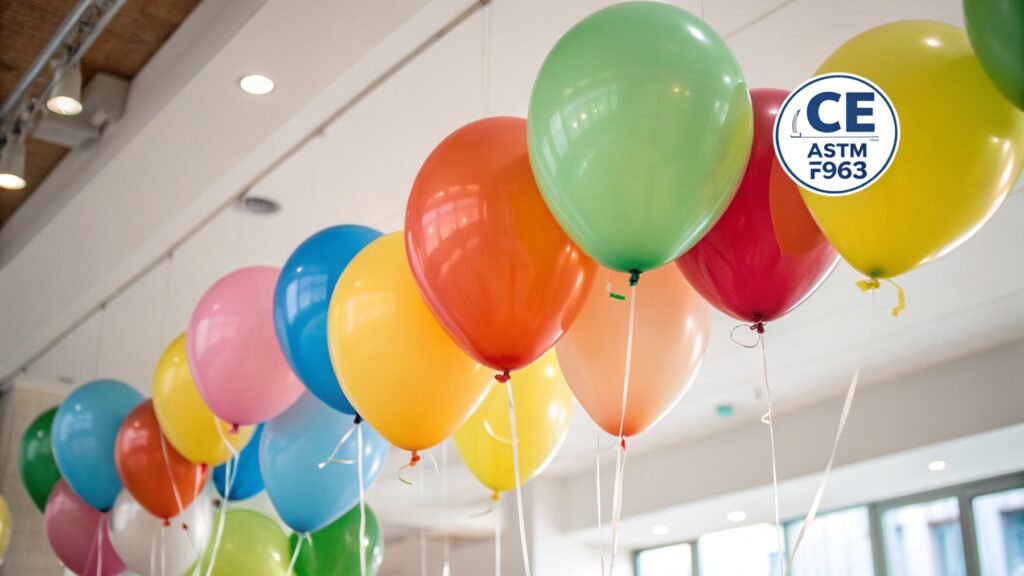
When I talk with customers, a common question comes up. They want to know if our eco-friendly balloons also meet the highest safety standards. This is a very good question because the terms sound similar, but they actually mean different things.
Are Eco-Friendly Balloons Non-Toxic for Children's Parties?
Are you planning a child's party and wondering if eco-friendly balloons are safe for them? Many parents think that if a product is good for the earth, it must also be safe for kids.
Eco-friendly balloons can be non-toxic for children's parties, but this depends on specific material testing and certifications1. "Eco-friendly" means better for the environment, while "non-toxic" means it does not harm living things. Parents should look for specific non-toxic labels2, not just "eco-friendly."
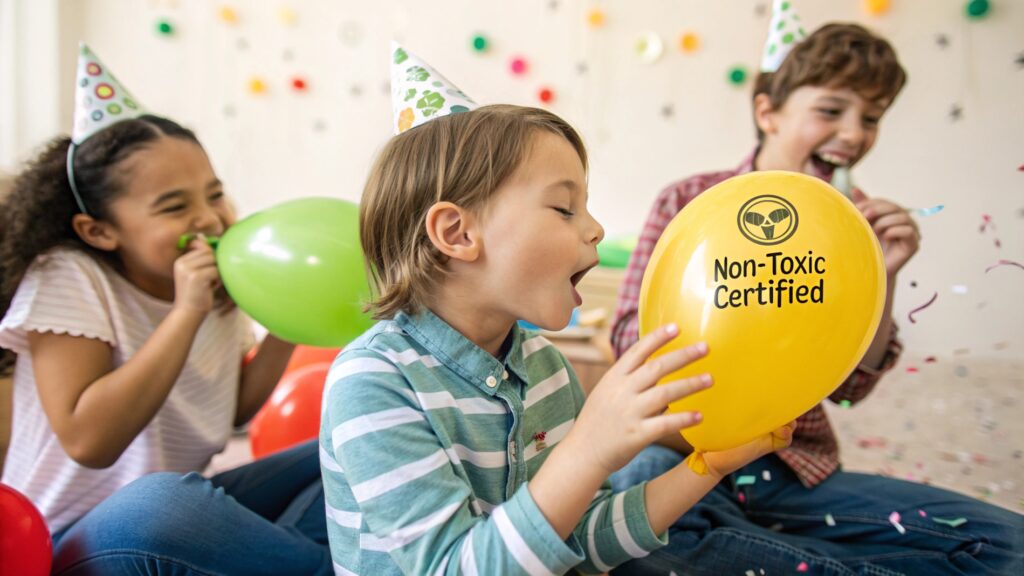
When we make balloons, we focus on both being kind to the planet and being safe for kids. For example, we might use materials that are better for the environment. But that does not automatically mean they are non-toxic for children. We also have to test the balloons. We make sure they do not have harmful chemicals. We check for things like heavy metals or other substances that could be dangerous if a child puts the balloon in their mouth. This is a separate process from just making them "eco-friendly."
Understanding the Difference Between Eco-Friendly and Non-Toxic
Let's break down what "eco-friendly3" and "non-toxic4" truly mean. These are two different ideas, even though they can sometimes overlap.
| Feature | Eco-Friendly | Non-Toxic |
|---|---|---|
| Primary Goal | Reduce environmental impact (e.g., sustainable sourcing, biodegradability) | Ensure product does not cause harm to living beings when used as intended |
| Focus | Raw materials, production process, waste management, end-of-life disposal | Chemical composition, potential for ingestion, skin contact, inhalation |
| Certifications | FSC (sustainable forestry), Compostable logos, Biodegradable standards | ASTM F963 (USA), EN71 (Europe), CPSIA (USA), REACH (Europe) |
| Example | A balloon made from natural rubber from sustainable forests that breaks down over time. | A balloon made without lead, phthalates, or other harmful chemicals, even if it is not biodegradable. |
As a manufacturer, we aim for both. We try to use materials that are sourced responsibly, like natural rubber from FSC-certified forests. This helps protect the environment. At the same time, we send our products for chemical testing. This testing checks for harmful substances. We get certifications like ASTM F963 for the US market. This certification proves our balloons are safe for children. It is about making sure our balloons are good for the planet and also safe for the little ones who will play with them.
Do Biodegradable Balloons Pose a Choking Hazard for Pets?
Are you worried if your furry friends are safe around biodegradable balloons5? Many pet owners wonder if these eco-friendly options are less risky if a pet accidentally gets hold of one.
Biodegradable balloons can still pose a choking hazard for pets. While they break down over time in the environment, their physical form remains a risk if swallowed before degradation occurs. Pet owners should always supervise pets around balloons, regardless of their biodegradability.
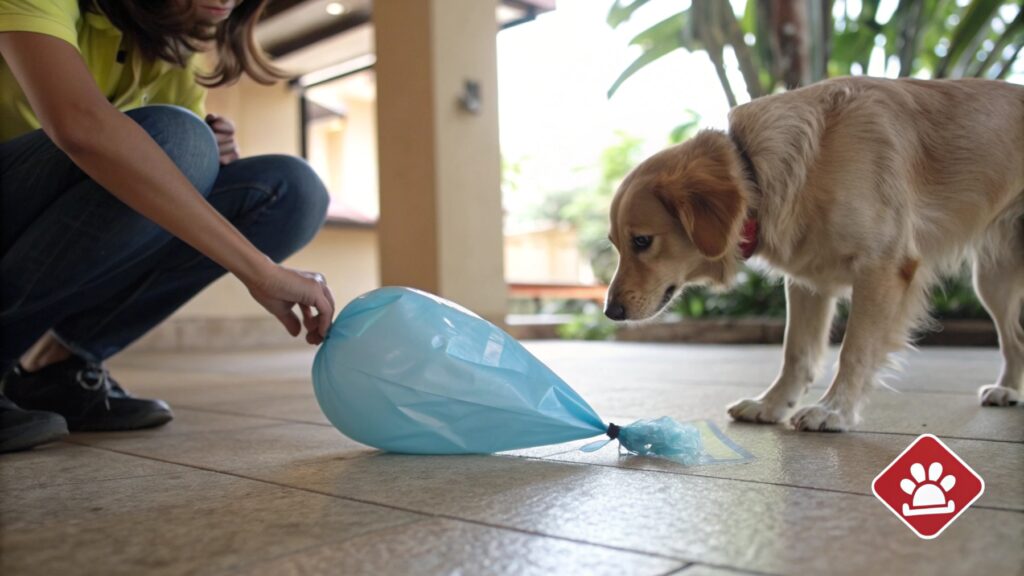
I often hear concerns from customers about pets and balloons. My own dog, for example, loves to chase anything that moves. So I understand why pet owners worry. Even if a balloon is biodegradable, it is still a physical object. If a pet swallows a piece, it can get stuck in their throat or digestive system. The fact that it will break down eventually does not help in the immediate moment if it causes an obstruction. This is why supervision is always the best rule.
Addressing Choking Hazards in Different Balloon Types
When it comes to choking hazard6s, the material of the balloon plays a role, but the main risk comes from the physical form.
| Balloon Type | Biodegradability Status | Choking Hazard Risk | Special Considerations |
|---|---|---|---|
| Latex | Biodegradable (natural) | High | Breaks into smaller pieces, but still a choking risk until fully degraded. |
| Mylar/Foil | Non-biodegradable | Low | Less likely to break into small pieces but can still be ingested; often larger. |
| PVC/Plastic | Non-biodegradable | High | Can be brittle and shatter into sharp, dangerous pieces if broken. |
| Specialty Eco-Friendly | Varies, often enhanced biodegradable | High | While material breaks down faster, the initial physical hazard remains the same. |
At AIHUA BALLOON, we mainly produce latex balloons. Latex is a natural material. It is biodegradable. This means it breaks down in the environment. However, this process takes time. For example, a latex balloon can break down as fast as an oak leaf under similar conditions. But before it breaks down, it is still a choking risk if ingested. This is why we always include safety warnings on our packaging. We advise users to supervise children and pets. This is important no matter how eco-friendly the balloon is. Safety first is our motto, even when we are proud of our environmental efforts.
Have Compostable Balloons Been Tested for Flammability?
Are you using compostable balloons7 for an event and wondering if they have been tested for fire safety? It is a fair question, especially for large gatherings or indoor displays.
Compostable balloons should be tested for flammability, as safety standards often include fire resistance requirements for products used by consumers. "Compostable" refers to how a material breaks down, not its reaction to fire. Event organizers must check for specific flammability test results, like EN71-2 for toys.
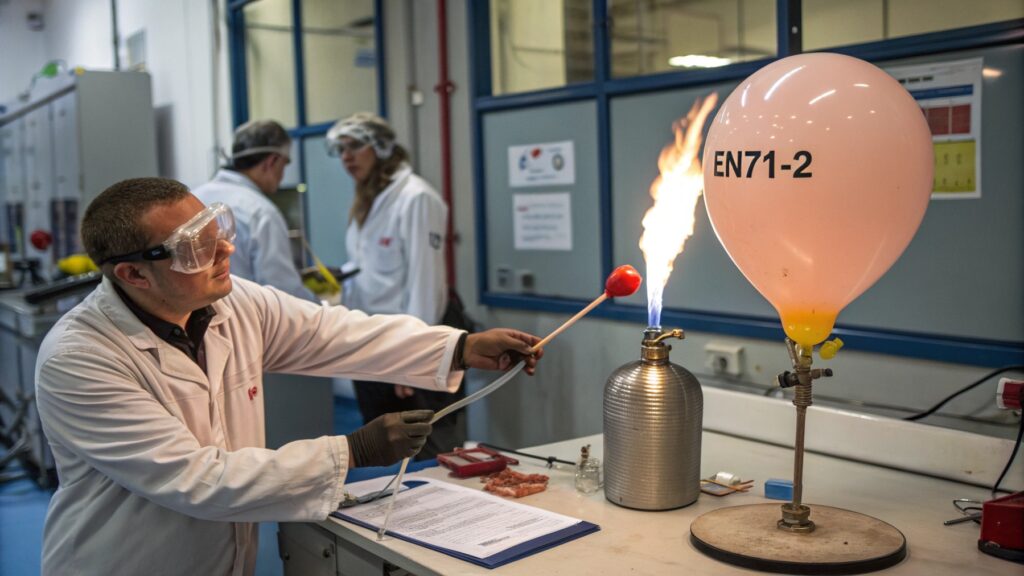
When we develop new products, especially those that are compostable, we do not just think about how they break down. We also think about other safety aspects. Flammability is a big one. For example, in many countries, consumer products, especially toys, must pass flammability tests. This is a separate test from whether something is compostable. I ensure that our products meet these standards. It is important for us to know that our balloons are not only good for the planet but also safe for people to use in any setting.
Flammability Standards for Balloons
Flammability testing ensures that a product does not ignite easily or spread flame quickly. This is crucial for consumer safety, especially for items used in homes or public spaces.
| Standard | Region/Purpose | Key Focus Areas | Relevance to Balloons |
|---|---|---|---|
| EN71-2 | European Toy Safety Standard (specifically flammability) | Flammability of toys, including materials like textiles, treated wood, plastic. | Applicable to balloons sold as toys in Europe, ensuring they do not ignite easily. |
| ASTM F963 | US Toy Safety Standard (includes flammability) | General toy safety, including flammability of solid materials, stuffed toys. | Relevant for balloons as toys in the USA; ensures safe burning characteristics. |
| UL 94 | Underwriters Laboratories (plastics flammability) | Vertical and horizontal burning tests for plastic materials. | Can be applied to plastic balloon components (e.g., valves, cups) to assess material flammability. |
| ISO 8124-2 | International Toy Safety Standard (flammability) | Similar to EN71-2, focusing on various toy materials. | Global standard for flammability of toys, including balloons. |
At AIHUA BALLOON, we follow global safety standards. For instance, our balloons are often tested to meet EN71-28 standards for flammability if they are marketed as toys in Europe. This means we ensure the balloon material does not catch fire easily or burn too quickly. We also make sure it meets ASTM F963 for the US market. These tests check how the material reacts to a flame. The fact that a balloon is "compostable" does not mean it is fireproof. We need to do specific tests to ensure fire safety. This is part of our commitment to delivering safe and high-quality products.
What Safety Certifications Do Eco-Friendly Balloons Hold for Event Use?
Are you planning an event and need to know what safety certifications9 eco-friendly balloons have? It is important to confirm that the products you use meet all necessary safety rules.
Eco-friendly balloons can hold various safety certifications, but these are separate from their environmental claims. For event use, look for certifications like CE (Europe), ASTM F963 (USA), or CCC (China) for general product safety. These show the balloons have passed tests for physical, chemical, and flammability hazards.
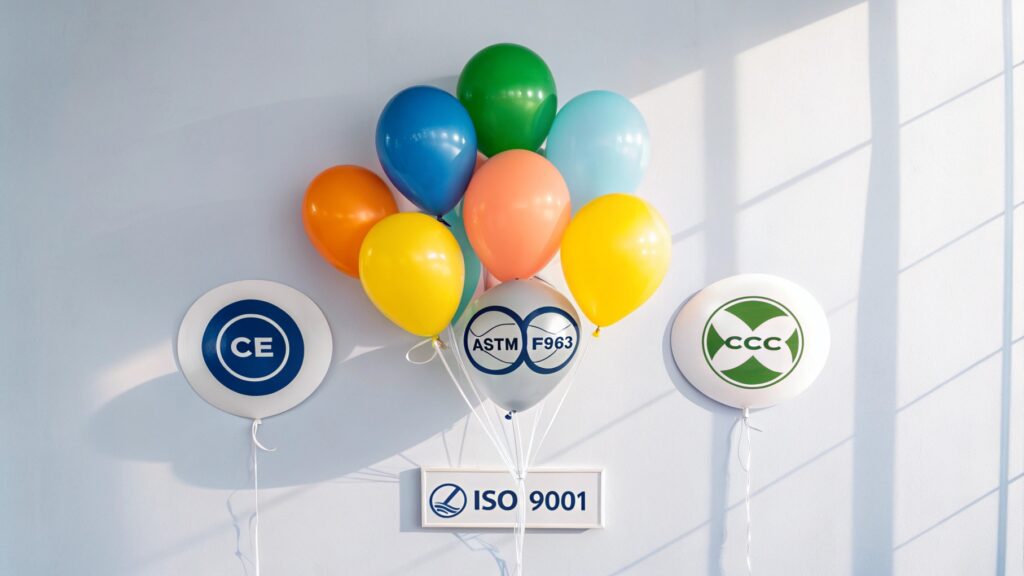
When I talk with event planners, they always ask about safety certifications. They want to make sure the balloons they use are safe for everyone attending. We explain that while "eco-friendly" is about how the balloon impacts the environment, safety certifications are about how the balloon impacts people. We ensure our products meet the required safety tests for the specific regions where they will be used. This gives our customers peace of mind.
Navigating Global Safety Certifications
Different regions have different safety standards. As a global supplier, we ensure our balloons meet the specific requirements of our diverse markets.
| Certification | Region/Country | Purpose | Relevance to Balloons |
|---|---|---|---|
| CE Mark10 | Europe | Signifies conformity with European Union safety, health, and environmental protection directives. | Essential for balloons sold as toys in the EU; covers physical, chemical, flammability, and electrical safety. |
| ASTM F96311 | USA | Consumer Product Safety Improvement Act (CPSIA) standard for toy safety. | Mandatory for balloons sold as toys in the US; covers mechanical, flammability, and heavy metal content. |
| CCG | Gulf Countries | Gulf Conformity Mark, indicating compliance with Gulf technical regulations. | Required for products entering Gulf Cooperation Council (GCC) member states, including toys. |
| ISO 9001 | International | Quality Management System standard. | Certifies the manufacturer's quality management processes, ensuring consistent product quality. |
| Sedex | International | Ethical supply chain audit; focuses on labor standards, health and safety, environment, business ethics. | Shows commitment to responsible sourcing and ethical production, important for corporate buyers like Sarah. |
At AIHUA BALLOON, we take product safety very seriously. We know that certifications are not just stamps; they mean our balloons have been rigorously tested. For example, if a customer in Europe orders our balloons, we ensure they have the CE Mark. This means they meet strict European safety rules. For the US market, we comply with ASTM F963. We also hold ISO 9001 and Sedex certifications. These show our commitment to quality and ethical practices in our manufacturing. So, while our balloons are eco-friendly, they are also certified safe for use, meeting global standards for quality and compliance.
Conclusion
Eco-friendly balloons can be very safe, but being "eco-friendly" does not automatically mean they meet safety standards. Always check for specific safety certifications like CE or ASTM F963, as these ensure product safety.
-
Learning about material testing and certifications ensures that products are safe for children. This link provides valuable insights. ↩
-
Knowing what to look for in non-toxic labels helps parents make informed choices for their children's safety. This resource can guide you. ↩
-
Explore this link to understand the principles of eco-friendly products and how they impact the environment positively. ↩
-
Learn about non-toxic certifications and standards to ensure safety for children and pets alike. ↩
-
Find out more about the safety of biodegradable balloons for pets and how to prevent choking hazards. ↩
-
Understanding choking hazards can help pet owners make safer choices for their pets around balloons. ↩
-
Learn about the safety standards for compostable balloons to ensure they are safe for your events. ↩
-
The EN71-2 standard is vital for ensuring toy safety, including balloons. Discover its requirements and implications for consumer safety. ↩
-
Knowing the safety certifications for eco-friendly balloons ensures you choose safe products for your events. This link provides essential insights. ↩
-
The CE Mark is essential for balloons sold in Europe, ensuring they meet strict safety standards. Learn more about its significance here. ↩
-
ASTM F963 is a critical safety standard for balloons in the US. Discover its importance and implications for consumer safety. ↩
